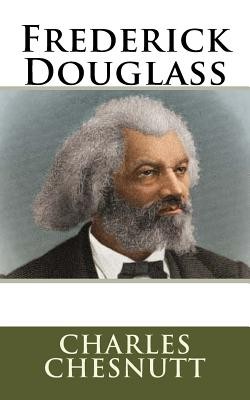
- We will send in 10–14 business days.
- Author: Charles Chesnutt
- Publisher: CreateSpace Independent Publishing Platform
- ISBN-10: 1978288395
- ISBN-13: 9781978288393
- Format: 12.7 x 20.3 x 0.7 cm, softcover
- Language: English
- SAVE -10% with code: EXTRA
Reviews
Description
This brief introduction to the life of Frederick Douglass opens with his birth in slavery and provides a short account of his escape to New York disguised as a sailor. After recounting Douglass's veritable act of self-naming, Chesnutt moves to Douglass's career as a lecturer on the antislavery circuit and his relationship with William Lloyd Garrison. In 1845, following the publication of his narrative, Douglass sailed to England, where he spent two years giving lectures on slavery and temperance throughout Great Britain. While in England, Mrs. Ellen Richardson secured funds for his legal manumission from Hugh Auld. When Frederick Douglass returned to the United States in April 1847, he was a free man with plans to establish and run his own antislavery newspaper. In December that same year, Douglass began printing and editing the North Star. The biography also describes Douglass's political activism and his work for African American civil liberties. In 1860, Douglass moved to Washington, D.C., where he was appointed to various committees (such as the Santo Domingo Commission in 1870) by Presidents Grant, Hayes, and Garfield, among others. Interestingly, Chesnutt only cursorily addresses some of the more controversial aspects of Douglass's life, including his public fallout with Garrison, his relationships with Julia Griffiths and John Brown, and his marriage to a white woman, Helen Pitts, in 1884. He overlooks entirely charges that Douglass distanced himself from his people or that his own affluence left him unsympathetic to his poorer brethren. Following descriptions of the many monuments and statues erected in Douglass's honor, Chesnutt closes with a Theodore Tilton poem that celebrates this "peer of princes, . . . the noblest Slave that ever God set free."
- Author: Charles Chesnutt
- Publisher: CreateSpace Independent Publishing Platform
- ISBN-10: 1978288395
- ISBN-13: 9781978288393
- Format: 12.7 x 20.3 x 0.7 cm, softcover
- Language: English English
This brief introduction to the life of Frederick Douglass opens with his birth in slavery and provides a short account of his escape to New York disguised as a sailor. After recounting Douglass's veritable act of self-naming, Chesnutt moves to Douglass's career as a lecturer on the antislavery circuit and his relationship with William Lloyd Garrison. In 1845, following the publication of his narrative, Douglass sailed to England, where he spent two years giving lectures on slavery and temperance throughout Great Britain. While in England, Mrs. Ellen Richardson secured funds for his legal manumission from Hugh Auld. When Frederick Douglass returned to the United States in April 1847, he was a free man with plans to establish and run his own antislavery newspaper. In December that same year, Douglass began printing and editing the North Star. The biography also describes Douglass's political activism and his work for African American civil liberties. In 1860, Douglass moved to Washington, D.C., where he was appointed to various committees (such as the Santo Domingo Commission in 1870) by Presidents Grant, Hayes, and Garfield, among others. Interestingly, Chesnutt only cursorily addresses some of the more controversial aspects of Douglass's life, including his public fallout with Garrison, his relationships with Julia Griffiths and John Brown, and his marriage to a white woman, Helen Pitts, in 1884. He overlooks entirely charges that Douglass distanced himself from his people or that his own affluence left him unsympathetic to his poorer brethren. Following descriptions of the many monuments and statues erected in Douglass's honor, Chesnutt closes with a Theodore Tilton poem that celebrates this "peer of princes, . . . the noblest Slave that ever God set free."


Reviews